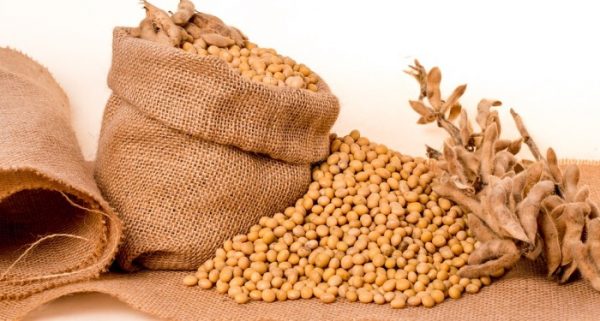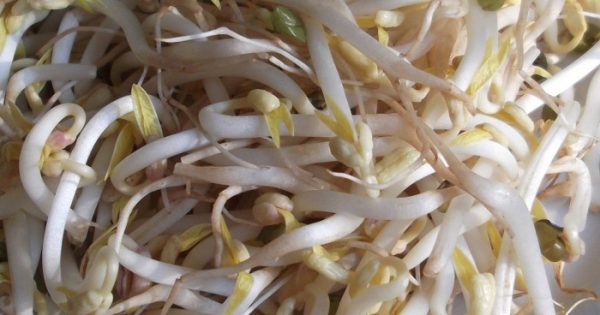Soybeans Growing:
The following is all about Soybeans Growing.
INTRODUCTION TO SOYBEANS GROWING
Soybean’s botanical name is Glycine max and it originated in China. Soybean accounts for “50%” total production of oilseed crops in the world. A very small proportion of the crop is consumed directly by humans. Soybean products appear in a large variety of processed foods. Soybeans, like most legumes, perform nitrogen fixation by establishing a symbiotic relationship with the bacterium Rhizobium japonicum. Soybean is the richest, cheapest, and easiest source of best quality protein and fat and having a vast multiplicity of uses as food and industrial products and hence called as wonder crop. Soybean serves as an important fat and protein source for a large population. It contains 20% oil and 40% high-quality protein. A large number of dishes are prepared using soybean. It is used for making high-protein food for children.
BENEFITS IN SOYBEANS GROWING

- Soybeans are an important global crop, providing oil and protein.
- It contains about 20 percent oil and 40 percent high-quality protein.
- It contains a good amount of minerals, salts, and vitamins (thiamine and riboflavin), and its sprouting grains contain a considerable amount of Vitamin C.
- A large number of Indian and western dishes such as bread, `chapatti’, milk, sweets, pastries, etc., can be prepared with soybean.
- It can be used as fodder, forage can be made into hay, silage, etc. Its forage and cake are excellent nutritive foods for livestock and poultry.
- Soybean is being the richest, cheapest, and easiest source of best quality proteins and fats and having a vast multiplicity of uses as food and industrial products is sometimes called a “wonder crop”.
UTILIZATION OF SOYBEAN
- Soybean is used as processed products such as soy flour, protein products, and fermented food products.
- Other products: are Beverage, whole milk, milk extender, Coagulated products like paneer.
- Fermented products: soy sauce, yogurt, cheese, etc.
- Sprouted cooked beans – fried and roasted nuts.
- Fortified foods like – bread, biscuits, cake, etc.
- Substitute products like bison, frozen desert.
- Textured products like nuggets, chunks, etc.
- High protein biscuits + granules.
VARIETIES IN SOYBEANS GROWING
- Monetta.
- A.C.S.-13.
- A.C.S.-57.
- A.C.S.-58.
- A.C.S-124.
- K. 472.
- S.-80-21.
- S. 335.
CLIMATE SUITABLE FOR SOYBEANS GROWING
Basically, it is a tropical crop but extends to subtropics and temperate climates. Soybean is a short-day plant, but the response to day length varies with variety and temperature. The suitable temperature is 26.5 °C to 30°C appears to be optimum for most of the varieties. The optimum temperature for germination is 30-35°C. The Maximum flowering occurs at 30°C.
SOIL IS REQUITED FOR SOYBEANS GROWING
Soybean can grow in red soils, black soils, and alluvial soil. Moderately salt tolerant. It is sensitive to waterlogging especially during the early stages. The optimum soil pH range is 6 to 6.5. Moderate polarized soil is need for the soybean crop.
SEED RATE IS REQUIRED FOR SOYBEANS GROWING

It depends upon germination percentage, seed size, and sowing time. If the seed is of 80 percent germination, 70kg to 80 kg seed per hectare is required. For late planting and for spring crops, the seed rate should be 100 kg to 120 kg per hectare. Since soybean loses its viability in 2 to 3 months, hence higher seed rate: 75 kg per ha or 25 to 30 kg/acre is to be given.
SPACING IN SOYBEANS GROWING
The spacing is given for soybean crop for heavy soils is 45cm x 5 cm and for the light, soils are 30 x 7.5 to 8 cm. Depth of sowing should not be more than 3cm to 4 cm under optimum moisture conditions. If the seed is placed deeper there is crust formation just after sowing, the seed germination. Seed drills are used in large areas, and sowing in ridges are to be followed under irrigated condition may be delayed and may result in a poor crop stand.
CROPPING SYSTEMS IN SOYBEANS GROWING
Mixed cropping of soybean with maize and sesamum has been found feasible and more remunerative.
Intercropping
- Soybean + maize.
- Soybean + pigeon pea.
- Soybean + finger millet.
- Soybean + cotton.
- Soybean + groundnut.
- Soybean + sorghum.
- Soybean + pearl millet.
Some of the common rotations followed in north India are as given below:
- Soybean – wheat.
- Soybean – potato.
- Soybean – gram.
- Soybean – tobacco.
- Soybean – potato – wheat.
SEED TREATMENT IN SOYBEANS GROWING
Seed is to be treated with Thiram (2g) + Carbendazim (1 g) or Thiram (3 g) + Imidachloprid (5 g) or Carbosulfan (30 g / 8-10 kg of seed).
FERTILIZER AND NUTRIENT MANAGEMENT IN SOYBEANS GROWING
- For obtaining good yields, you should apply 15-20 tonnes of FYM or Compost per ha.
- But soybean being a legume crop has the ability to supply their own “N” needs to be provided they have been inoculated. As a starter dose application of 20 to 30 kg N per ha in low fertile soils. Light soils 20 + 40-60 + 20-40 + 20 kg N P K S /ha.
- Soybean requires relatively large amounts of phosphorus than other crops. Phosphorus is taken by soybean plants throughout the growing season. The period of demand starts just before pod formation and continues until about 10 days before seeds are fully developed. With the application of phosphorus, the number and density of nodules are stimulated and the bacteria become more mobile.
- Soybean also requires a relatively large amount of potassium than other crops. The rate of potassium uptake reaches a peak during the period of rapid vegetative growth then slows down about the time the bean begins to form.
IRRIGATION MANAGEMENT IN SOYBEANS GROWING
The soybean crop generally does not require any irrigation during the rainy season. However, if there were a long spell of drought at the time of pod filling, one irrigation would be desirable. During excessive rains, proper drainage is also equally important. The crop responds to irrigation in the intensive cropping system. Due to deep tap root system with 1.8 m deep withstands moisture stress for short periods. Under soil moist stress, Flower drops, but due to an “extended period of flowering,” late formed flowers will compensate for early flower drop. Critical stages of the crop are flowering and pod development stages are sensitive stages for moisture stress. The scheduling of irrigation is at 50 DASM or at IW/CPE 0.6. Irrigation in Light soils can be given once in 10 to 12 days, in heavy soil at an interval of 18 to 20 days. Irrigated by check basin or border method, but furrow method is ideal. Under Water scarcity conditions, sprinkler irrigation and alternate furrow can be followed. WUE (water using efficiency) is 0.4 to 0.7 kg m-3. And water requirement is 450 to 750 mm.
Drip irrigation is most favorable for soybean crops. Fertilizer application can be applied along with the irrigation, the most important is critical stages of irrigation you should not skip the schedule.
WEED MANAGEMENT IN SOYBEANS GROWING
The First 6 to 7 weeks after seeding is a critical period, hence clean cultivation is essential. Since the crop is sown in lines/rows, inter cultivation can be done 2 times, first at 20-30, followed by second at 45 DAS along with manual weeding. For a wide range of weeds in soybean, foliage herbicides provide excellent weed control. Pre-plant herbicides (PPI) are Fluchloralin 1.0 to 1.5 kg/ha. Preemergence herbicides are Alachlor (1.5 to 2.0), Acetachlor (1 to 1.5) Metachlor (1 to 1.5) oxyflourfen(0.5 to 1.0). Post-emergence herbicides are Quizol fop ethyl (Turgasuper) @400 ml/acre Imzythpyr (250 mg / ac) (pursuit) for broad-leaved weeds.
PESTS MANAGEMENT IN SOYBEANS GROWING
STEM FLY: – Ophiomyia phaseoli
- Distinct tunnel of stem split open.
- Death of plant or branches.
- Pupation is at ground level within the stem. Adult fly exits through a thin semi-transparent window.
MANAGEMENT
- Seed treatment with imidacloprid 3 grams/kg seed gives protection up to 30 days.
- Foliar spray with acephate 1.5 grams/l liter of water or dimethoate 2 ml/l or monocrotophos 1.6 ml/liter of water.
SOYBEAN LEAFMINER: – Aproaerema modicella
- The severely infested field presents a symptom as if burnt when viewed from a distance. The full-grown caterpillar is green with a dark head and pupates within the web.
- Foliar spray with acephate 1.5 grams/liter of water or chlorpyriphos 2.5 ml/liter of water or quinalphos 2 ml/liter of water were effective measures.
WHITEFLY: – Bemisia tabaci
- Both nymphs and adults suck sap from the undersurface of leaves, excrete honeydew. Damaged leaves show uniform bronzing.
- Foliar spray with acephate 1.5 grams/liter of water or triazophos 2 ml/liter of water or profenophos 2 ml/liter of water were effective measures.
HARVESTING IN SOYBEANS GROWING
When plants mature, leaves turn yellow, start dropping, pods dry out quickly. There is a rapid loss of moisture from the seed. At harvest, the moisture content of the seeds should be 15 percent. Harvesting can be done by hand; Plants are uprooted, or cut with sickle above ground level. After cutting, plants are heaped and sun-dried for a day or two. Threshing is usually done by beating with sticks or using mechanical threshers. Threshed produce is winnowed to separate seeds from the chaff. The cleaned seed is dried for 1 to 2 days. Seed is stored in moisture-proof bags/seed bins.
YIELD IN SOYBEANS GROWING

The average yield of the soybean crop is 25 grams/ha. Threshing is usually done by beating with sticks or using mechanical threshers. Threshed produce is winnowed to separate seeds from the chaff. The cleaned seed is dried for 1 to 2 days. Seed is stored in moisture-proof bags/seed bins. The seeds are treated with Thiram @ 2 grams/kg and packed in a 300 gauge thick poly-lined gunny bag or ordinary gunny bag to maintain germination of 70% for 8 months.
Read about Organic Compost.
In case if you miss this: Growing Vegetables Hydroponically.
- Blossom to Harvest: Mastering Flowering and Pollination in Papaya Farming
- Pig Fattening Essentials: From Selection to Sale for Beginners
- Raising Wagyu Cattle: A Complete Guide for Premium Beef Production
- Soil Types and Their Water Holding Capacity
- Optimizing Irrigation Schedules for Coconut Groves for Enhanced Yield
- Espresso Your Garden: Coffee Grounds for Healthier Acid-Loving Plants
- The Best Soil Mix for Snake Plants: How to Mix Your Own Snake Plant Soil
- Green Thumb Success: Expert Tips for Cultivating Greenhouse Beans All Year Round
- Bloom All Year Round: The Ultimate Guide to Indoor Hyacinth Care
- Eco-Friendly Gardening: How to Make Liquid Fertilizer from Kitchen Waste
- Ultimate Guide to Grow Anise in Pots: Explore Seed Propagation to Harvesting
- Guide to Raising Chester White Pigs: Discover Breed Facts to Growth Management
- Mastering the Elegance: The Ultimate Guide to Weeping Cherry Tree Care, Planting, and Maintenance
- Ultimate Guide to Planting Garlic in Grow Bags: Growing Strategies for Beginners
- How to Fix Spider Plant Leaf-Related Problems: Natural and Organic Remedies
- 10 Reasons Why Your Tulsi Plant is Shedding Leaves: Home Remedies and Solutions
- Optimizing Growth and Yield: The Advantages of Palm Bunch Ash Fertilizer
- Utilizing Neem Oil Extract as a Natural Pesticide for Hydrangea
- From Soil to Harvest: Various Ways in Which Farmers Can Use AI Tools
- Steps to Encourage and Induce Citrus Flowers: A Comprehensive Guide
- How to Fix Snake Plant Leaf-Related Issues: Natural and Organic Remedies

Greetings to your respectable self for the wonderful and beneficial work you’re doing.
I have learnt a lot from your highly beneficial write up about farming and agriculture as a whole.
Thanks a million. I hope to keep following up with you. I will be glad to become a successful farmer with your guidance.
My regards,
Sunny Ajayi, (Nigeria).